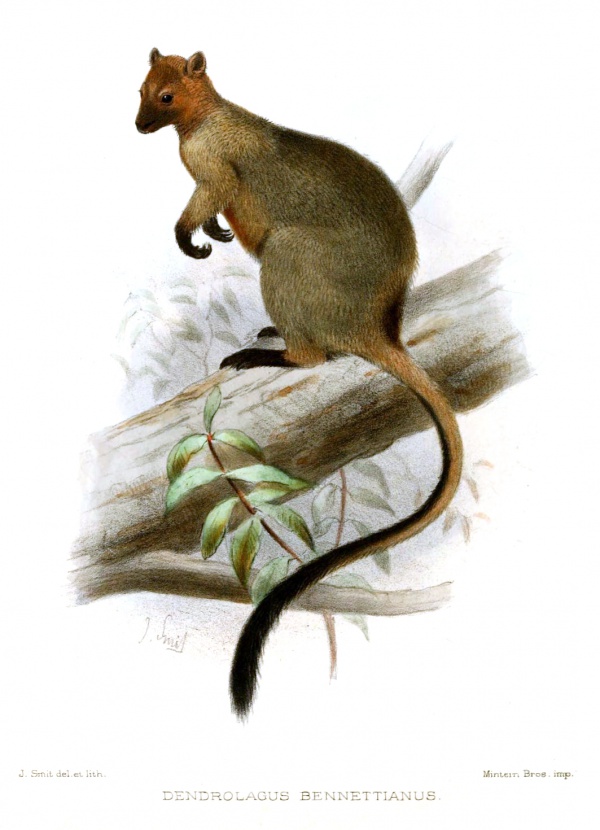Facts About Bennett's tree-kangaroo
Bennett's tree-kangaroo is a captivating and athletic marsupial native to the tropical rainforests of Queensland, Australia. These arboreal inhabitants are quite formidable in size, with males weighing as much as 14 kg, while females range between 8 and 10.6 kg. They are paragons of agility, capable of making substantial leaps from branch to branch and even descending from significant heights without injury.
These reclusive animals primarily sustain themselves on a diet of leaves from various rainforest plants. Despite their herbivorous nature, they must remain vigilant against predators such as pythons and dingoes.
Physically, Bennett's tree-kangaroo is distinguished by its elongated forelimbs, shorter hindlimbs, and a bushy tail. Their fur is dark brown on their back, with lighter hues on the chin and abdomen, complemented by striking black hands and feet. Intriguingly, they are believed to be the closest living relatives to the ancestral form of tree-kangaroos.
In terms of conservation, Bennett's tree-kangaroo has shown promising signs of recovery in recent years. Increased sightings and an expanding habitat range have been noted. Currently, they are listed as "near threatened" by the IUCN. However, due to protection under World Heritage legislation and a decline in hunting by Aboriginal communities, experts believe they should be reclassified as "secure." This positive trend suggests that Bennett's tree-kangaroo is rebounding and on the path to recovery.
